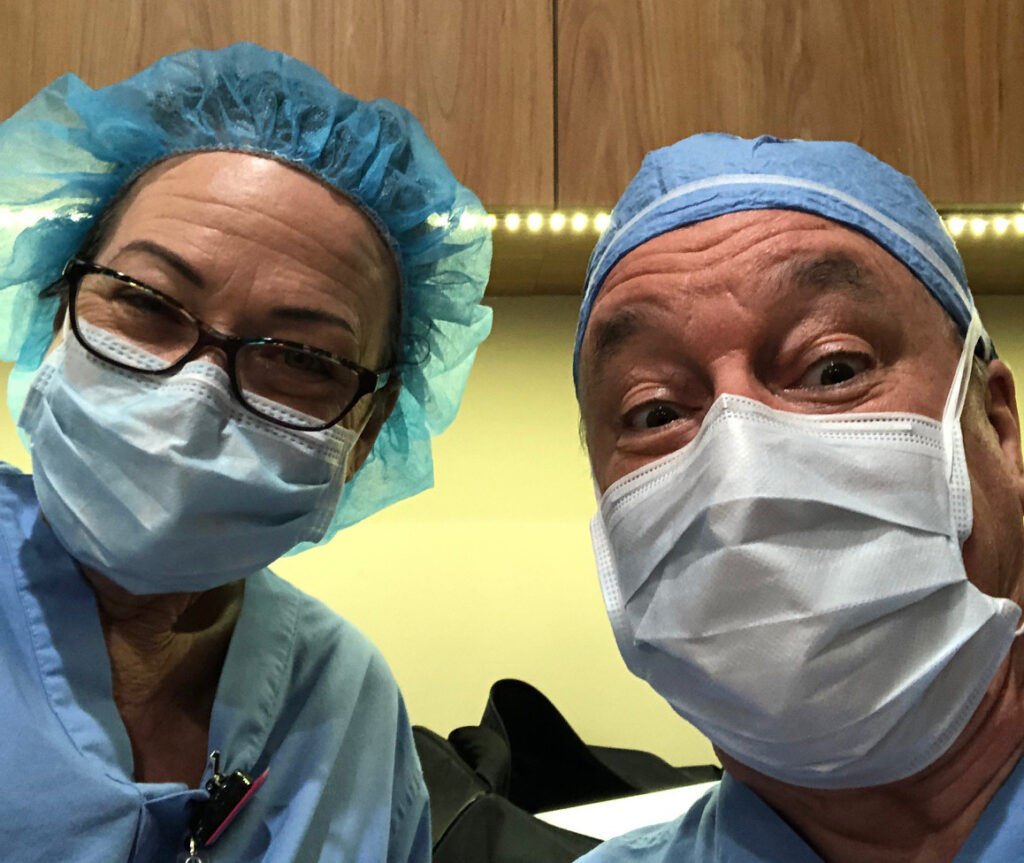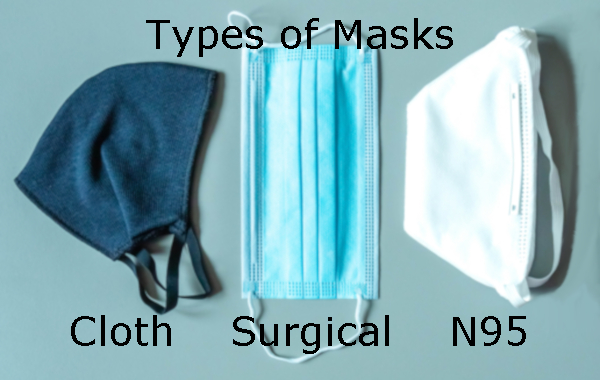Patient Safety is, and always has always been, a top priority. With COVID-19, this year poses new challenges, but the goal remains the same: to provide the best care, in the safest setting using tried and true sterile techniques.
Patient Safety
In the past, Patient Safety was all about procedure safety. Whether in the office or the operating room, safety centered around the operation itself. Now, actions outside the OR are also very important; therefore, all the necessary precautions are taken to minimize the risk of exposure to the novel Coronavirus.
So what are we doing differently? We don’t just mask up for surgery. Now, we mask up for all consultations, pre-op visits and follow-up appointments. For my established patients, this is new since the Pandemic started. They were used to seeing my face in the office. Sadly, my new patients only recognize me with a mask. At least they are comfortable when they see me on surgery day.

Masks have always been one of many means to prevent infections in the operating room. Surgical masks provide superior protection.
Surgical Safety – How do we Prepare?
As always, we do the following:
- Thorough evaluation, medical history and physical examination
- Establish reasonable expectations
- Select the best treatment(s) via consultation
- Proper preoperative work-ups
- Maximize control of known medical conditions
- Preoperative instructions: avoid smoking, blood thinners and other meds incompatible with surgery
- Ensure that the right monitoring equipment is available
- The best anesthetic care
- Meticulous surgical technique and sterility
Avoiding Colds Before Surgery
Avoiding illness before surgery has always been important. In fact, catching a cold remains one of the common reasons for rescheduling surgery. Any upper respiratory infection (URI) can be made worse by having a surgical procedure. For procedures like Tummy Tucks, this is especially true. A sore belly makes it harder to cough, and coughing can loosen the abdominal repair.
COVID-19 and Surgery
COVID-19 can cause a URI or pneumonia. It can interfere with recovery and increase your risk of a wound infection. COVID-19 can also increase your risk of a wound infection. On the other hand, surgery can exacerbate a COVID-19 infection.
Mixing COVID-19 and surgery is to be avoided, except in an emergency. In addition to the respiratory complications listed above, COVID-19 also interferes with normal blood clotting. COVID-19 may increase the risk of thrombosis (clotting) of the blood, which may lead to infarctions, heart attacks, stroke, deep vein thrombosis (DVT). pulmonary emboli (PE) and even death.
COVID-19 Without Surgery
Even if you are not having surgery, it is worth avoiding a COVID-19 infection. While most patients will have mild symptoms, some will be disabled for weeks and others may require hospitalization. So, what can we do?
How To Prevent a COVID-19 infection
Currently there is no cure for COVID-19, so prevention is the best medicine. The recommendations are well known and fairly simple. According to the CDC, The virus is thought to spread mainly from person-to-person.
- Between people who are in close contact with one another (within about 6 feet).
- Through respiratory droplets produced when an infected person coughs, sneezes or talks.
- These droplets can land in the mouths or noses of people who are nearby or possibly be inhaled into the lungs.
- Some recent studies have suggested that COVID-19 may be spread by people who are not showing symptoms.
How To Protect Yourself

James Hinchcliffe masked up at the Indianapolis 500 qualifying races. Recent evidence suggests neck gaiters do not work as well as masks, but this one is so creepy it might work better.
The best way to prevent illness is to avoid being exposed to this virus. There are six areas to focus on to protect yourself and others:
- Wash your hands often
- Avoid close contact with others
- Cover your mouth and nose with a mask in public
- Cover coughs and sneezes
- Clean and disinfect
- Monitor your health daily
Why #MaskUp
You could spread COVID-19 to others even if you do not feel sick. The mask is meant to protect other people in case you are infected. Evidence also suggests that wearing a mask can protect you from getting the disease, or decrease the amount of virus you inhale, which might lead to a milder case of COVID-19. Either way, masks help reduce the spread, so mask up
An Example You Might Not Hear on the News
The excerpt below is from the CDC Morbidity and Mortality Weekly Report July 17, 2020:
On May 12, 2020 (day 0), a hair stylist at salon A in Springfield, Missouri (stylist A), developed respiratory symptoms and continued working with clients until day 8, when the stylist received a positive test result for SARS-CoV-2, the virus that causes coronavirus disease 2019 (COVID-19). A second hair stylist (stylist B), who had been exposed to stylist A, developed respiratory symptoms on May 15, 2020 (day 3), and worked with clients at salon A until day 8 before seeking testing for SARS-CoV-2, which returned a positive result on day 10. A total of 139 clients were directly serviced by stylists A and B from the time they developed symptoms until they took leave from work.
This story does not start well. The bad news: Two COVID-19 positive hairstylists worked in a closed space for 8 to 10 days and exposed at least 139 clients to potential infection. If you have symptoms, get tested and quarantine yourself. The good news: Both ill hairstylists, the other well stylists in the salon and the 139 clients exposed all wore masks.
Stylists A and B and the 139 clients followed the City of Springfield ordinance* and salon A policy recommending the use of face coverings (i.e., surgical masks, N95 respirators,† or cloth face coverings) for both stylists and clients during their interactions. Other stylists at salon A who worked closely with stylists A and B were identified, quarantined, and monitored daily for 14 days after their last exposure to stylists A or B. None of these stylists reported COVID-19 symptoms. After stylist B received a positive test result on day 10, salon A closed for 3 days to disinfect frequently touched and contaminated areas. After public health contact tracings and 2 weeks of follow-up, no COVID-19 symptoms were identified among the 139 exposed clients or their secondary contacts.
But the story ends well. By following the precautions above, none of the exposed contracted COVID-19. There were zero cases from this potential cluster, which is most likely due to everyone wearing a mask.
Types of Masks
There are three main mask types: Cloth, Surgical and N95. Each provides increasing levels of protection, but only when properly worn. Cloth masks can prevent aerosolized droplets from spraying with coughs or sneezes. Surgical masks and N95 masks are designed to stop progressively smaller particles. However, the air needs to flow through the masks for them to work properly. Studies show that motion, even talking, can break the seal and allow small particles to enter or escape around the edges. Even so, they all decrease the viral load.

Different masks provide differing levels of protection, but only when worn properly.
Six Degrees of Separation Between You and COVID-19
The six protective measures enumerated above are pretty easy for most of us, and they warrant repeating: Wash your hands often. Avoid close contact. Cover your mouth and nose with a mask when around others. Cover coughs and sneezes. Clean and disinfect. Monitor your health daily. The bottom line: Be safe and mask up America.
Previous Post Next Post